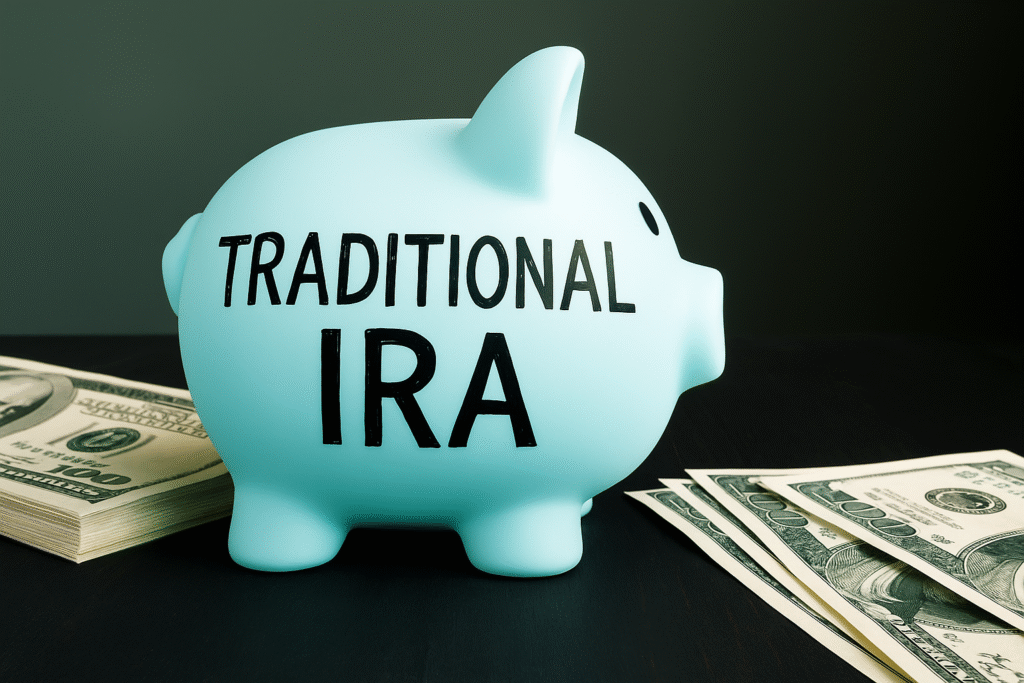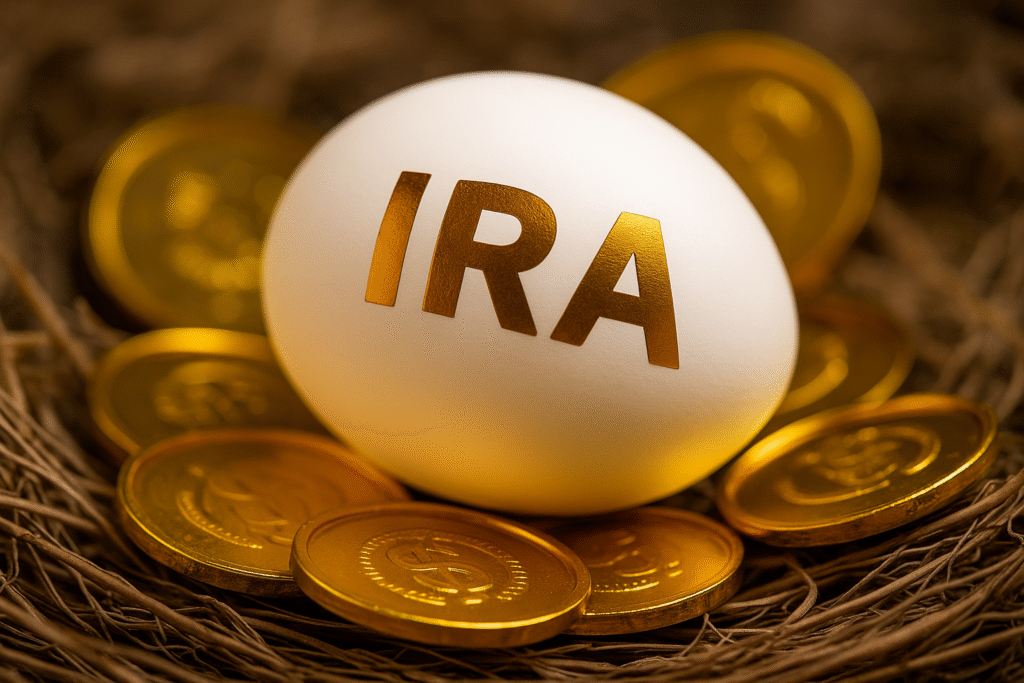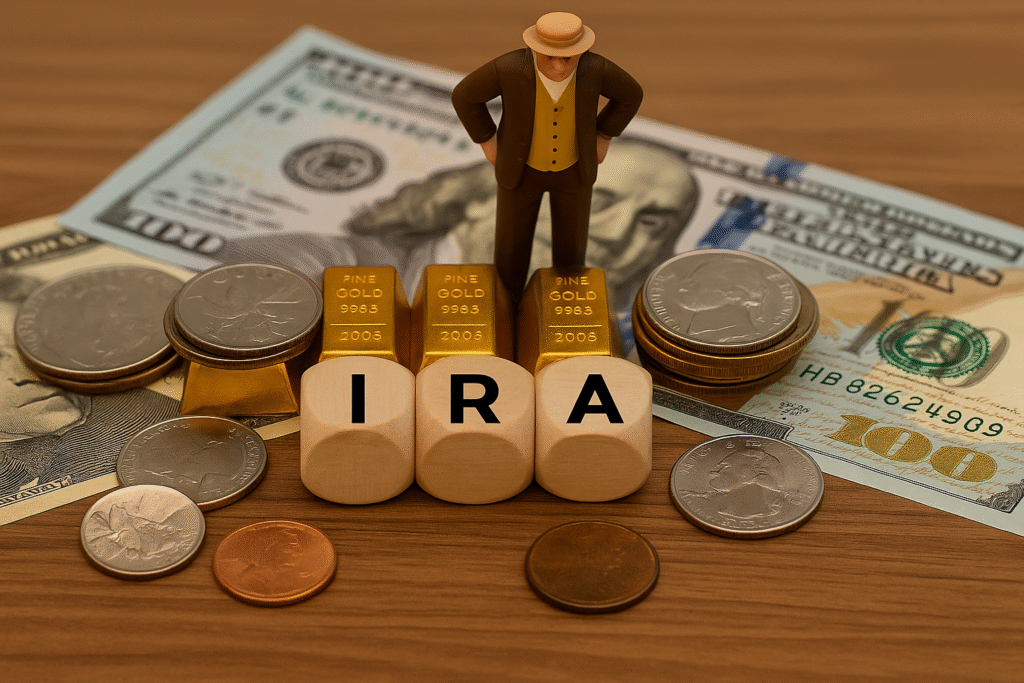Are you preparing for retirement but feel like you’re missing out on some crucial information? 🤔 You’re not alone. Millions of Americans rely on Traditional IRAs as a cornerstone of their retirement strategy, yet many are unaware of the hidden potential within these accounts. There are shocking secrets about Traditional IRAs that could be uncovered. What if we told you that your Traditional IRA could be the key to unlocking wealth you never thought possible?
Prepare to have your mind blown as we unveil 5 Shocking Secrets About Traditional IRAs That Could Make You Rich. These aren’t your run-of-the-mill tips; they’re game-changing insights that could revolutionize your retirement planning. From little-known contribution strategies to investment hacks that even some financial advisors miss, we’re about to take you on a journey that could transform your financial future.
In this eye-opening exploration, we’ll dive deep into the world of Traditional IRAs, covering everything from the basics to advanced techniques. We’ll unravel the mysteries behind different types of IRAs, reveal the hidden benefits, and show you how to maximize your contributions and investments. For a comprehensive comparison of IRA types and tax advantages, check out this guide from Fidelity Investments. By the time you finish reading, you’ll be armed with the knowledge to potentially boost your retirement savings beyond your wildest dreams. Are you ready to discover the secrets that could make you rich? Let’s begin!
Understanding Traditional IRAs

A. Definition and key features
A Traditional IRA (Individual Retirement Account) is a tax-advantaged savings account designed to help individuals save for retirement. Here are the key features:
- Tax-deferred growth
- Potential tax-deductible contributions
- Wide range of investment options
- Penalty-free withdrawals after age 59½
- Required Minimum Distributions (RMDs) starting at age 72
| Feature | Description |
|---|---|
| Tax-deferred growth | Earnings grow tax-free until withdrawal |
| Contribution deductibility | Contributions may be tax-deductible, depending on income and other factors |
| Investment flexibility | Options include stocks, bonds, mutual funds, and more |
| Early withdrawal penalties | 10% penalty on withdrawals before age 59½, with some exceptions |
| RMDs | Mandatory distributions starting at age 72 |
B. Eligibility criteria
To open and contribute to a Traditional IRA, you must:
- Have earned income
- Be under age 70½ (for contributions)
- Meet income limits for tax-deductible contributions (if covered by an employer-sponsored retirement plan)
C. Contribution limits
For 2023, the contribution limits are:
- $6,500 per year for individuals under 50
- $7,500 per year for individuals 50 and older (catch-up contribution)
D. Tax advantages
Traditional IRAs offer several tax benefits:
- Potential tax-deductible contributions
- Tax-deferred growth on investments
- Possible lower tax bracket in retirement
- State tax benefits in some locations
Now that we’ve covered the basics of Traditional IRAs, let’s explore the different types available to investors.
Types of Traditional IRAs

A. Deductible IRAs
Deductible IRAs are a popular choice for those looking to maximize their tax benefits while saving for retirement. These accounts allow you to contribute pre-tax dollars, potentially lowering your taxable income for the year. Here’s a quick breakdown of the key features—one of the shocking secrets about Traditional IRAs that can have a big impact on your financial future
- Contributions are tax-deductible (subject to income limits)
- Earnings grow tax-deferred
- Withdrawals in retirement are taxed as ordinary income
| Income Range (2023) | Single Filers | Married Filing Jointly |
|---|---|---|
| Full Deduction | Up to $68,000 | Up to $109,000 |
| Partial Deduction | $68,000-$78,000 | $109,000-$129,000 |
| No Deduction | Over $78,000 | Over $129,000 |
B. Non-deductible IRAs
For those who don’t qualify for deductible contributions, non-deductible IRAs offer an alternative path to tax-advantaged retirement savings. Key points include:
- Contributions are made with after-tax dollars
- Earnings grow tax-deferred
- Only earnings are taxed upon withdrawal
C. Spousal IRAs
Spousal IRAs are a unique opportunity for non-working or low-income spouses to build retirement savings. Notable features:
- Allows a working spouse to contribute on behalf of a non-working spouse
- Subject to the same contribution limits as other IRAs
- Can be either deductible or non-deductible, depending on income
Now that we’ve explored the types of Traditional IRAs, let’s delve into their numerous benefits and how they can supercharge your retirement savings strategy.
Benefits of Traditional IRAs

Tax-deferred growth
One of the most significant advantages of Traditional IRAs is tax-deferred growth. This means your investments can grow without being taxed until you withdraw the funds in retirement. Here’s how it works:
- Contributions are made with pre-tax dollars
- Earnings accumulate tax-free
- Taxes are only paid upon withdrawal
This tax-deferred growth can significantly boost your retirement savings over time. Consider the following comparison:
| Investment Type | Initial Investment | Annual Return | Value After 30 Years |
|---|---|---|---|
| Taxable Account | $5,000 | 7% | $28,500 |
| Traditional IRA | $5,000 | 7% | $38,100 |
Potential tax deductions
Contributing to a Traditional IRA may offer immediate tax benefits:
- Contributions can be tax-deductible, reducing your taxable income
- Deduction limits depend on factors like income and workplace retirement plans
- Even partial deductions can result in significant tax savings
Flexible investment options
Traditional IRAs provide a wide range of investment choices:
- Stocks and bonds
- Mutual funds and ETFs
- Real estate investment trusts (REITs)
- Certificates of deposit (CDs)
This flexibility allows you to tailor your investment strategy to your risk tolerance and financial goals.
Retirement income security
Traditional IRAs offer a reliable source of retirement income:
- Guaranteed income stream during retirement
- Required Minimum Distributions (RMDs) ensure systematic withdrawals
- Can be used to supplement other retirement accounts or pensions
By leveraging these benefits, Traditional IRAs can play a crucial role in building a secure financial future. Next, we’ll explore the process of contributing to a Traditional IRA and how to make the most of your contributions.
Contributing to a Traditional IRA

Timing and frequency of contributions
Contributing to your Traditional IRA doesn’t have to be a once-a-year event. You can make contributions throughout the year, which can be beneficial for several reasons. This strategy is one of the lesser-known shocking secrets about Traditional IRAs that can enhance your retirement planning efficiency and financial discipline. you can make contributions throughout the year, which can be beneficial for several reasons:
- Dollar-cost averaging: Regular contributions can help smooth out market volatility
- Budgeting: Smaller, frequent contributions may be easier to manage than a large lump sum
- Maximizing time in the market: Earlier contributions have more time to grow
| Contribution Frequency | Pros | Cons |
|---|---|---|
| Annual lump sum | Simplicity, potential for larger initial investment | May be harder to budget |
| Monthly | Easier budgeting, dollar-cost averaging | Requires more discipline |
| Bi-weekly | Aligns with many pay schedules | More transactions to track |
Contribution methods
There are several ways to contribute to your Traditional IRA:
- Direct deposit from your paycheck
- Electronic funds transfer from your bank account
- Check or money order
- Wire transfer
- Asset transfer from another account
Age limits for contributions
As of 2020, there is no age limit for contributing to a Traditional IRA. This change allows individuals to continue saving for retirement regardless of their age, as long as they have earned income.
Excess contribution penalties
Be cautious not to exceed the annual contribution limits set by the IRS. Excess contributions are subject to a 6% penalty tax each year until corrected. To avoid this:
- Monitor your contributions carefully
- Consider setting up automatic contributions that stay within limits
- Consult with a financial advisor or tax professional if unsure
Now that we’ve covered the ins and outs of contributing to a Traditional IRA, let’s explore the various investment options available within these accounts.
Investment Options within Traditional IRAs

Stocks and bonds
Traditional IRAs offer a wide range of investment options, with stocks and bonds being among the most popular choices. Stocks provide potential for high returns and long-term growth, while bonds offer stability and regular income. Here’s a comparison of these two investment options:
| Investment | Potential Return | Risk Level | Income Generation |
|---|---|---|---|
| Stocks | High | Higher | Dividends |
| Bonds | Moderate | Lower | Interest |
Diversifying your portfolio with a mix of stocks and bonds can help balance risk and reward in your Traditional IRA.
Mutual funds and ETFs
For those seeking diversification and professional management, mutual funds and Exchange-Traded Funds (ETFs) are excellent choices within a Traditional IRA. These investment vehicles offer:
- Instant diversification
- Professional management
- Lower minimum investment requirements
- Ease of trading
ETFs generally have lower expense ratios compared to mutual funds, making them an attractive option for cost-conscious investors.
Real estate investments
Traditional IRAs also allow for real estate investments, offering unique opportunities for portfolio diversification. Options include:
- Real Estate Investment Trusts (REITs)
- Real estate mutual funds
- Direct property ownership (with certain restrictions)
Real estate can provide steady income and potential appreciation, but it’s important to understand the rules and regulations surrounding these investments in an IRA.
Alternative investments
For more adventurous investors, Traditional IRAs can accommodate alternative investments such as:
- Precious metals
- Private equity
- Hedge funds
- Cryptocurrencies (with caution)
These options can potentially offer higher returns but often come with increased risk and complexity. It’s crucial to thoroughly research and understand any alternative investment before including it in your Traditional IRA portfolio. Exploring these shocking secrets about Traditional IRAs can help you navigate the risks while uncovering opportunities to grow your retirement savings strategically.
Now that we’ve explored the various investment options available within Traditional IRAs, let’s examine how distributions work and the rules you need to follow when withdrawing funds from your account.
Distributions from Traditional IRAs

Required Minimum Distributions (RMDs)
Required Minimum Distributions (RMDs) are a crucial aspect of Traditional IRAs that can significantly impact your retirement planning. These mandatory withdrawals begin at age 72 and are calculated based on your account balance and life expectancy.
| Age | RMD Factor |
|---|---|
| 72 | 25.6 |
| 75 | 22.9 |
| 80 | 18.7 |
| 85 | 14.8 |
Failing to take RMDs can result in hefty penalties, so it’s essential to understand and plan for them.
Early withdrawal penalties
While Traditional IRAs offer tax-deferred growth, accessing funds before age 59½ can be costly. Early withdrawals are subject to:
- 10% early withdrawal penalty
- Income tax on the withdrawn amount
However, there are exceptions to this rule, including:
- First-time home purchase (up to $10,000)
- Qualified higher education expenses
- Unreimbursed medical expenses exceeding 7.5% of AGI
Qualified distributions
Qualified distributions from Traditional IRAs occur after age 59½ and are subject to income tax but avoid the early withdrawal penalty. These distributions can be taken as:
- Lump-sum payments
- Periodic withdrawals
- Annuity payments
Strategic planning of qualified distributions can help optimize your retirement income and minimize tax implications.
Inheritance and beneficiary rules
Inheriting a Traditional IRA comes with specific rules that vary depending on your relationship to the original account holder:
- Spouse beneficiaries: Can treat the inherited IRA as their own or take distributions based on their life expectancy
- Non-spouse beneficiaries: Must generally withdraw the entire account balance within 10 years
Understanding these distribution rules is crucial for maximizing the value of your Traditional IRA and ensuring a smooth transfer of wealth to your beneficiaries. With this knowledge, you can make informed decisions about your retirement savings strategy and legacy planning. By grasping these shocking secrets about Traditional IRAs and other IRA wealth strategies, you’re better equipped to protect your assets and build a lasting financial legacy.
Traditional IRA vs. Other Retirement Accounts

Comparing with Roth IRAs
When weighing your retirement savings options, understanding the differences between Traditional and Roth IRAs is crucial. Here’s a comparison:
| Feature | Traditional IRA | Roth IRA |
|---|---|---|
| Contributions | Pre-tax | After-tax |
| Tax benefits | Immediate tax deduction | Tax-free withdrawals in retirement |
| Income limits | No income limits for contributions | Income limits apply |
| Required Minimum Distributions (RMDs) | Required at age 72 | No RMDs during owner’s lifetime |
| Early withdrawal penalties | 10% penalty on withdrawals before age 59½ | 10% penalty on earnings withdrawn before age 59½ |
Traditional IRAs offer upfront tax benefits, making them attractive for those who expect to be in a lower tax bracket during retirement. Roth IRAs, on the other hand, provide tax-free growth and withdrawals, ideal for those anticipating higher future tax rates.
401(k) plans and Traditional IRAs
Many employees have access to both 401(k) plans and Traditional IRAs. Here’s how they compare:
- Contribution limits: 401(k)s have higher contribution limits ($19,500 in 2021) compared to Traditional IRAs ($6,000 in 2021)
- Employer matching: 401(k)s often come with employer matching contributions, essentially free money
- Investment options: Traditional IRAs typically offer a wider range of investment choices
- Loan provisions: Some 401(k) plans allow borrowing against your balance, while IRAs do not
Consider maxing out your 401(k) employer match before contributing to a Traditional IRA to optimize your retirement savings strategy.
SEP and SIMPLE IRAs
For self-employed individuals and small business owners, SEP (Simplified Employee Pension) and SIMPLE (Savings Incentive Match Plan for Employees) IRAs offer alternatives to Traditional IRAs:
- SEP IRAs allow higher contribution limits (up to 25% of compensation or $58,000 in 2021)
- SIMPLE IRAs are easier to set up and maintain for small businesses with 100 or fewer employees
- Both plans offer tax-deductible contributions and tax-deferred growth, similar to Traditional IRAs
Now that we’ve explored how Traditional IRAs stack up against other retirement accounts, let’s look at strategies for maximizing your Traditional IRA’s potential.
Maximizing Your Traditional IRA

Contribution strategies
To maximize your Traditional IRA, consider these powerful contribution strategies:
- Max out your contributions
- Make catch-up contributions if you’re 50 or older
- Contribute early in the year
- Set up automatic contributions
| Age Group | Annual Contribution Limit (2023) |
|---|---|
| Under 50 | $6,500 |
| 50 and over | $7,500 |
Investment allocation tips
Diversify your portfolio to balance risk and potential returns:
- Stocks: For long-term growth
- Bonds: For stability and income
- Real estate investment trusts (REITs): For diversification
- Index funds: For broad market exposure
Rebalancing your portfolio
Regularly rebalancing your Traditional IRA helps maintain your desired asset allocation:
- Review your portfolio annually
- Sell overperforming assets and buy underperforming ones
- Consider automatic rebalancing options
Tax planning considerations
Maximize tax benefits with these strategies:
- Contribute to your Traditional IRA in high-income years
- Consider Roth conversions in low-income years
- Plan distributions carefully to minimize tax impact
By implementing these strategies, you can significantly boost your retirement savings and make the most of your Traditional IRA. Remember to consult with a financial advisor to tailor these approaches to your specific situation and goals. Next, we’ll compare Traditional IRAs with other retirement accounts to help you make informed decisions about your overall retirement planning strategy.
Final Thoughts

Traditional IRAs hold untapped potential for savvy investors looking to secure their financial future. From tax-deferred growth to flexible investment options, these retirement accounts offer a wealth of benefits that can significantly boost your long-term savings. By understanding the various types of Traditional IRAs, contribution limits, and distribution rules, you can make informed decisions to maximize your retirement nest egg. Unlocking these shocking secrets about Traditional IRAs—from little-known IRA facts to smart investment strategies—can turn a modest portfolio into a retirement powerhouse.
Take control of your financial destiny by exploring the power of Traditional IRAs. Whether you’re just starting your career or nearing retirement, it’s never too late to leverage these accounts to your advantage. Consult with a financial advisor to develop a personalized strategy that aligns with your goals and risk tolerance. With careful planning and smart investment choices, your Traditional IRA could be the key to unlocking a rich and comfortable retirement. The journey doesn’t stop here—discover more insights at Investillect.

